Folk Music
Bengal’s soul in traditional tunes
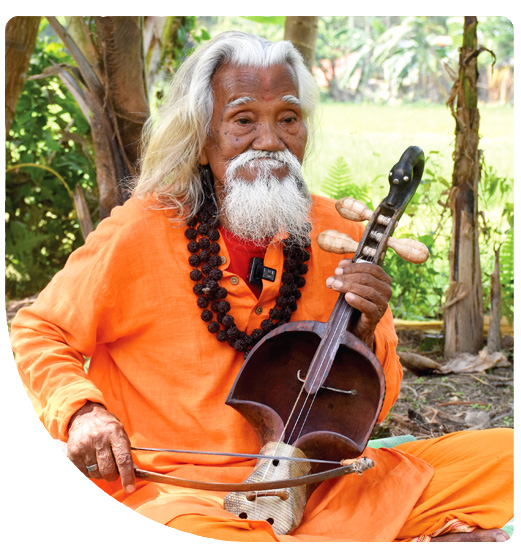
Folk Music
Bengal`s folk music embodies a captivating tapestry of melodies and cultural narratives. It spans secular and religious tunes, social ballads, chants of laborers, and mythical hymns, echoing the emotions and realities of rural life. These diverse musical expressions are intricately woven into specific occasions, ceremonies, rituals, and social gatherings, reflecting the vibrant tapestry of Bengal`s culture. Genres like Baul, Bhawaiya, Kobi Gaan, Kirtan, Bhatiyali, and Jhumur form the essence of folk music, each resonating with its unique significance.

Baul
Baul, a spiritual music genre and philosophy, embodies Bengal's soulful essence, delving into self-discovery. Stemming from Chaitanyadev’s Bhakti movement, it stands as Bengal's pioneering social reform. Baul musicians advocate transcending caste, creed, and religion for love, peace, and unity. Love propagation defines Baul's essence, inherited through guru-disciple lineage, emphasizing akhra-based practices. Baul music has been inscribed in UNESCO’s Representative List of the ICH of Humanity in the year 2008. Bauls utilize a rich array of folk instruments like ektara, dotara, khamak, dubki, dhol, khol, mandira, and flute, honing their craft through akhra-based practices. This genre represents not just music but a profound cultural ethos, fostering unity and spiritual exploration in Bengal's vibrant heritage.
Know moreBaul Hubs
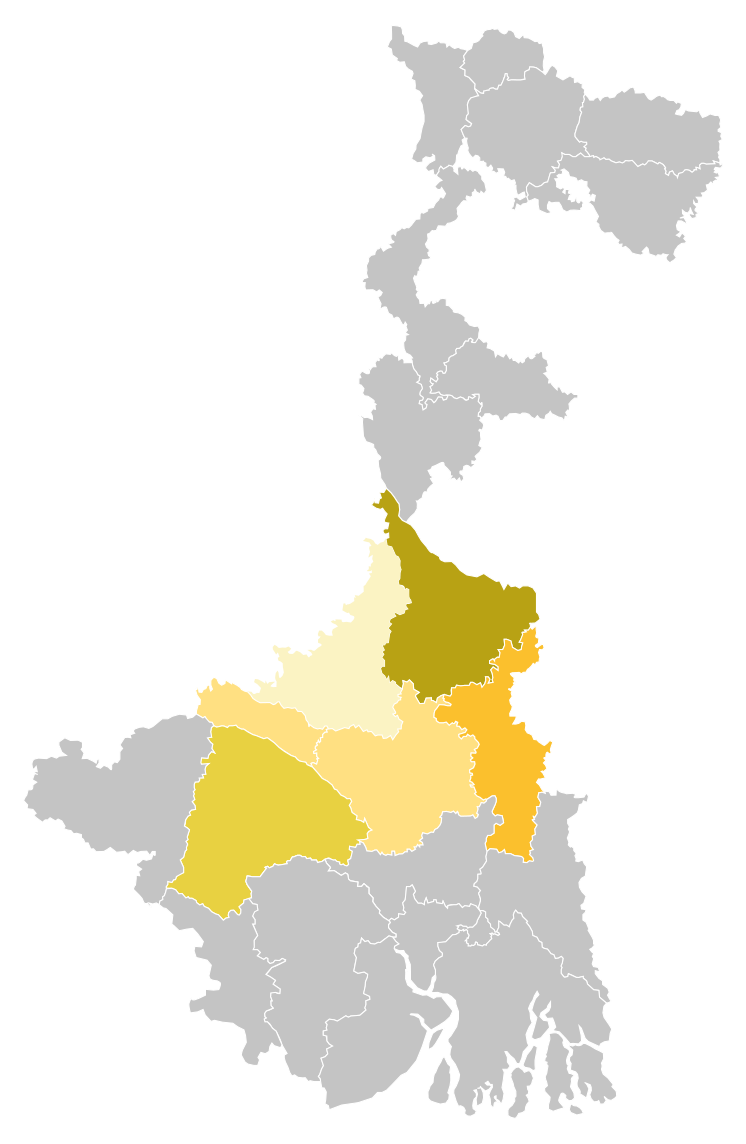
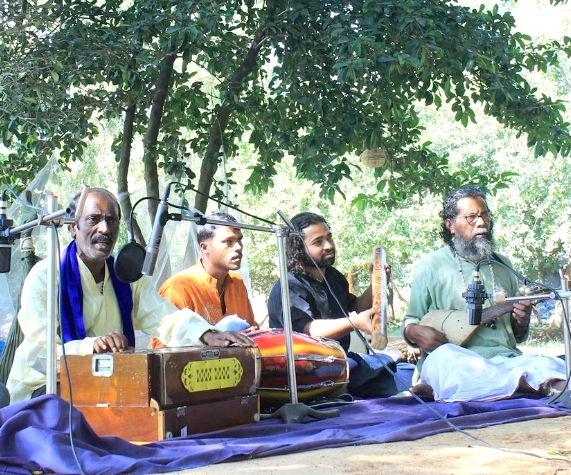
Bhatiyali
Bhatiyali music is inspired by the boatman’s life on the river. The word bhati means low land, and bhata means low tide. It is a tradition of the Sundarbans region of India and Bangladesh. The district of North 24 Parganas is the main hub of Bhatiyali music and is home to about 180 Bhatiyali singers. Traditionally, the boatmen sang Bhatiyali songs while sailing. The songs usually express love, compassion, admiration, and anguish of boatmen through simple lyrics and lingering tunes. These songs also express the lived realities of the boatmen and celebrate spirituality. The lyrics reflect the challenges and hardships the boatmen face in their everyday lives.
Legendary singer Abbas Uddin Ahmed made the genre popular among the masses. Bhatiyali is also integral to the local folk dramas Banbibir Pala and Gazir Gaan. This genre of music is accompanied by traditional musical instruments such as dotara, ektara, tabla, dhol, flute, etc.
Bhatiyali Hubs
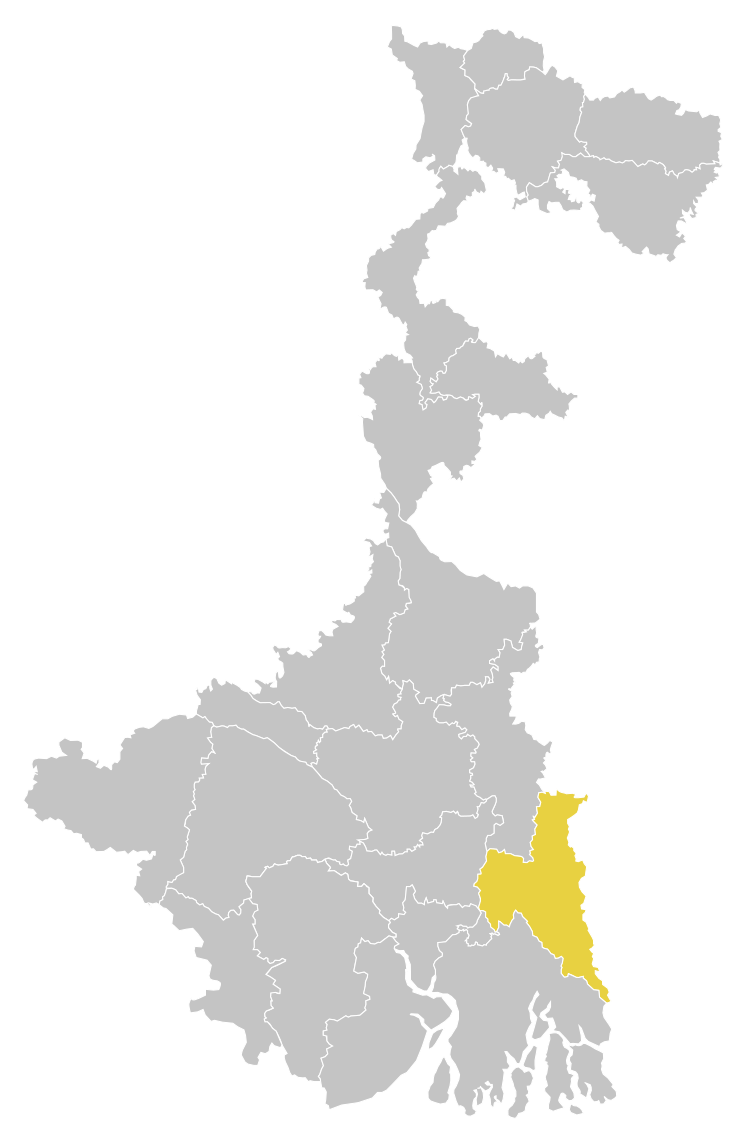
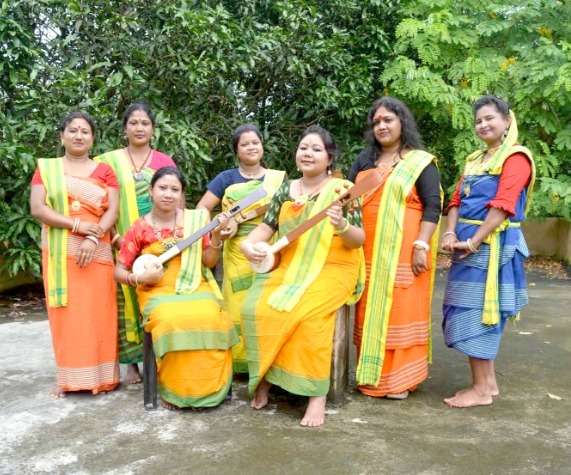
Bhawaiya
Bhawaiya songs reflect the experiences of rural life. Many believe that The name is derived from the term bhava meaning emotion. Bhawaiya is popularly used in the folk theatre forms of North Bengal—prominent among these are Kushan Pala (story of Lav and Kush), Chor Chunni Pala (story of a thief and his wife), Mechenir Pala (the story of Mech tribes), and others. The Bhawaiya songs reflect the rural professions of the community, where some are elephant herders while the others are bull rearers. Traditional musical instruments accompanying Bhawaiya music include dotara, dhol, khol (percussion), sarinda, and flute.
The RCCH project had an immense impact on Bhawaiya music, creating a bridge between the practitioners of different districts and locales which have helped the gurus to come together to create a Bhawaiya curriculum and spread it amongst the local Bhawaiya training centres and also developing a quality supply line to the generated demand of authentic folk music.
Bhawaiya Hubs
